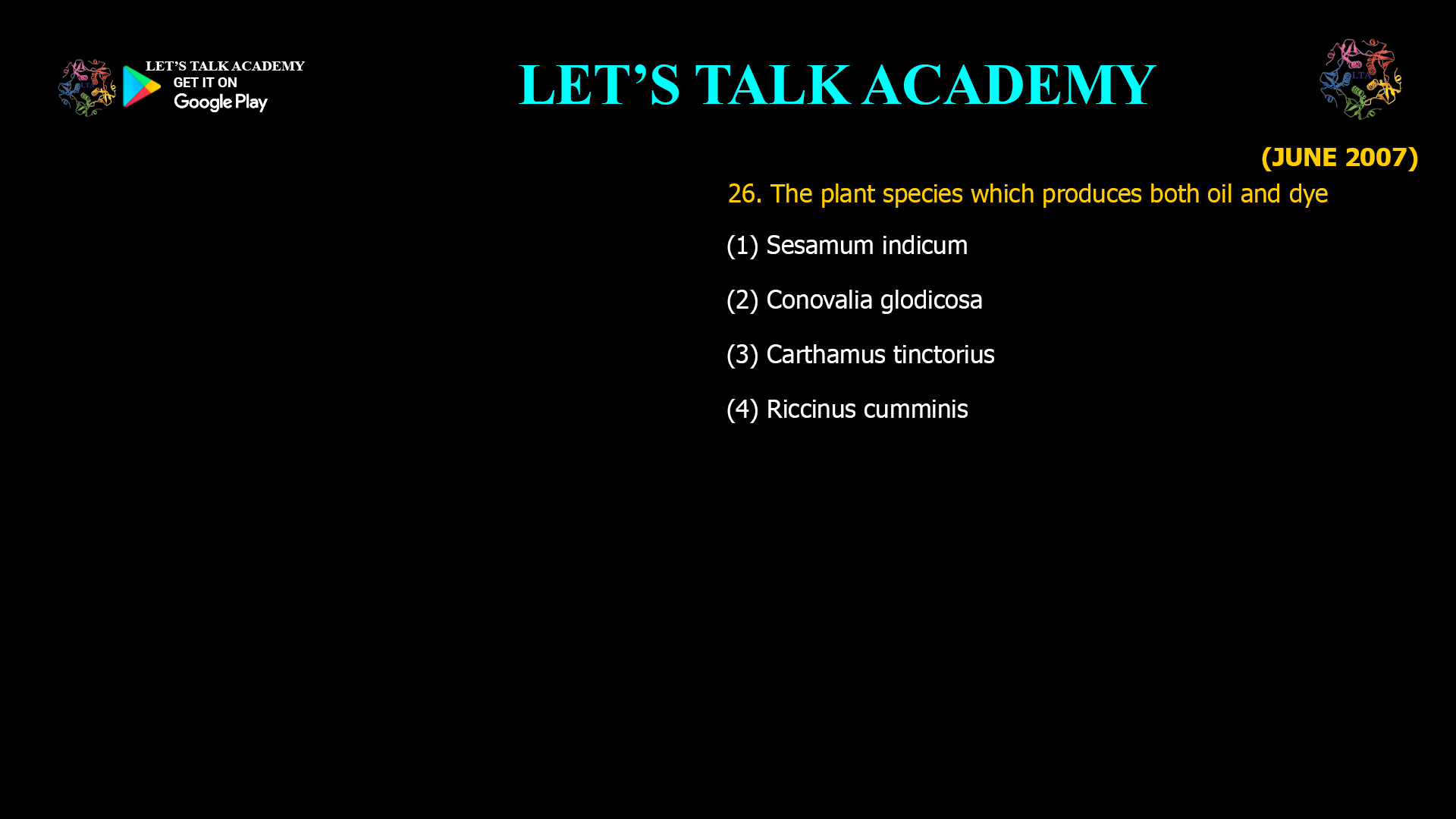26. The plant species which produces both oil and dye
(1) Sesamum indicum
(2) Conovalia glodicosa
(3)Carthamus tinctorius
(4) Riccinus cumminis
Correct answer: (3) Carthamus tinctorius
Explanation:
-
(1) Sesamum indicum (sesame) is primarily known for its seeds rich in edible oil but not widely used as a dye source.
-
(2) Convolvulus glomeratus (likely intended) is generally not a well-known commercial source for oil or dye.
-
(3) Carthamus tinctorius (safflower) is a notable plant that produces edible oil from its seeds and is also traditionally used as a source of natural dye (yellow/orange pigment) from its flowers.
-
(4) Ricinus communis (castor bean) is a source of castor oil but not used for natural dye production.
Option-wise:
-
(1) Sesamum indicum — oil only.
-
(2) Convolvulus glomeratus — no relevant commercial use for oil/dye.
-
(3) Carthamus tinctorius — oil and dye; correct.
-
(4) Ricinus communis — oil only.
Carthamus tinctorius, commonly known as safflower, serves dual purposes as a source of edible oil and natural dye pigments, making it valuable both agriculturally and industrially, unlike Sesamum or Ricinus which primarily provide oil.



